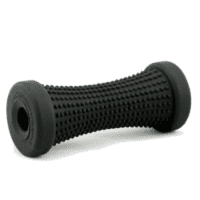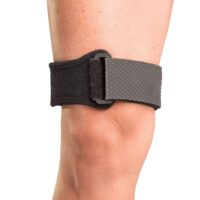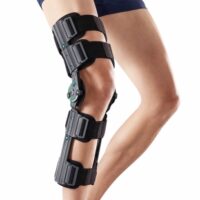Knee Ligament Injury
Article by John Miller

Knee Ligament Injury
A Comprehensive Guide from a Physiotherapist’s Perspective
Introduction
Knee ligament injuries significantly impact mobility and quality of life. This guide, from a physiotherapist’s perspective, explores these injuries, emphasising the role of physiotherapy in the journey towards recovery.
Understanding Knee Ligaments
The knee contains four key ligaments: the Anterior Cruciate Ligament (ACL), Posterior Cruciate Ligament (PCL), Medial Collateral Ligament (MCL), and Lateral Collateral Ligament (LCL). These ligaments are essential for knee stability and movement, making them susceptible to injuries, particularly in sports activities involving sudden changes in direction or impacts.
Specific Info:
- ACL: Anterior Cruciate Ligament
- PCL: Posterior Cruciate Ligament
- MCL: Medial Collateral Ligament
- LCL: Lateral Collateral Ligament
Causes and Symptoms
Knee ligament injuries often result from sports-related activities, with symptoms ranging from mild discomfort to severe pain. Common indicators include swelling, instability, and reduced range of motion in the affected knee.

Grades of Knee Ligament Injuries
Ligament injuries are classified into three grades:
- Grade I Sprain: Mild, with overstretched ligaments.
- Grade II Sprain: Partial tear, causing moderate pain and swelling.
- Grade III Sprain: Complete tear, leading to significant instability and potential nerve damage.
Knee Ligament Injuries: From Pain to Performance Recent Advances in Treatment
The management of knee ligament injuries, especially multi-ligament injuries (MLKIs), is complex due to the variety of injury patterns. These injuries often involve the ACL and PCL, along with other ligaments and structures like the menisci and nerves. Initial management includes closed reduction and external fixation. Treatment strategies need to be individualised for optimal outcomes.
Innovative Surgical Techniques
Recent advancements include one-stage reconstruction for chronic multiligament injuries, using autografts. This technique addresses each injured ligament in a specific order to restore knee stability, with a critical sequence of graft fixation.
Postoperative Rehabilitation
Rehabilitation starts from the first postoperative day, emphasising early mobilisation. Isometric quadriceps exercises and ankle pumping exercises are initiated, followed by a gradual progression to more demanding exercises. Full weight-bearing mobilization typically starts at 8 weeks, with careful monitoring and adjustment based on individual progress.
Physiotherapy: A Cornerstone of Recovery
Physiotherapy plays a crucial role in rehabilitation. Techniques like manual therapy, exercise prescriptions, and functional training are fundamental to restoring knee function. A physiotherapist’s guidance ensures a recovery plan tailored to individual needs.
Recovery Time and Expectations
Recovery times vary based on the injury grade and individual response to treatment:
- Grade I: Several weeks with rest and physiotherapy.
- Grade II: Up to six weeks, sometimes needing a knee brace.
- Grade III: Several months, possibly requiring surgery followed by extensive physiotherapy.
Preventing Knee Ligament Injuries
Preventative strategies are crucial in reducing the risk of knee ligament injuries. Two notable examples are the “Netball Knee” program and the “FIFA 11+” routine.
Netball Knee
The “Netball Knee” program is tailored for netball players. Netball, a sport that involves quick stops, starts, and changes in direction, places significant strain on the knee ligaments. The program focuses on educating players about proper techniques for landing, pivoting, and balancing. It includes specific exercises aimed at improving leg strength, stability, and agility, thus reducing the likelihood of knee injuries during play.
FIFA 11+
Similarly, the “FIFA 11+” is a comprehensive warm-up program designed by FIFA’s Medical Assessment and Research Centre. It aims to reduce injuries in football players. This program consists of exercises that focus on core and leg strength, balance, and proper movement patterns. It includes plyometrics, balance training, and strength exercises, which have been shown to reduce the incidence of knee injuries among footballers. The routine is structured to be performed as a warm-up before training and matches, preparing the muscles and ligaments for the physical demands of the game.
Both programs demonstrate how sport-specific training and proper warm-up routines can significantly lower the risk of knee ligament injuries. They emphasise the importance of strength, flexibility, and proper technique in injury prevention. These examples highlight the role of targeted exercise routines in supporting knee health and preventing ligament injuries in high-impact sports.
Conclusion: The Importance of Professional Guidance
Knee ligament injuries necessitate a comprehensive approach for effective treatment and recovery from knee ligament injuries. Consulting with a qualified physiotherapist, sports doctor and Orthopaedic Surgeon ensures a customised treatment plan, facilitating a swift and complete return to pre-injury activities.
What to Do?
If you’re experiencing knee ligament pain or suspect an injury, consulting a physiotherapist or doctor is crucial. Early intervention is key to a successful recovery and minimising the risk of further injury.
Rochedale - Call 38410277
Book Online: RochedaleSalisbury - Call 32751044
Book Online: SalisburySandgate - Call 32691122
Book Online: SandgateRelated Articles
- Detailed Guide on ACL Injuries: Offers an in-depth look at Anterior Cruciate Ligament injuries, their causes, symptoms, and treatment options.
- Understanding PCL Injuries and Treatments: Provides insights into Posterior Cruciate Ligament injuries, including how they differ from other knee injuries and their specific rehabilitation methods.
- MCL Injury: Causes, Symptoms, and Recovery: Discusses Medial Collateral Ligament injuries, focusing on prevention and recovery strategies.
- LCL Injury: Diagnosis and Treatment: Explores Lateral Collateral Ligament injuries, detailing diagnostic methods and treatment plans.
- Posterolateral Corner Injury: Explores a less common but very significant type of knee injury, detailing the symptoms and treatment approaches.
- Superior Tibiofibular Joint Sprain: Offers insights into this specific type of knee injury, its impact, and recovery processes.
- Surgical and Non-Surgical Treatments for Knee Ligament Injuries: Compares different treatment approaches for knee ligament injuries, including when surgery might be necessary.
- Preventing Knee Ligament Injuries in Sports: Focuses on preventive measures and training routines to reduce the risk of knee injuries in athletes.
- The Role of Physiotherapy in Treating Knee Ligament Injuries: Highlights how physiotherapy aids in the rehabilitation and strengthening of the knee post-injury.





















































































